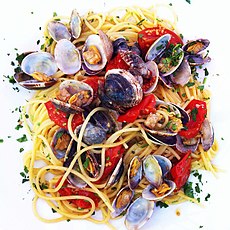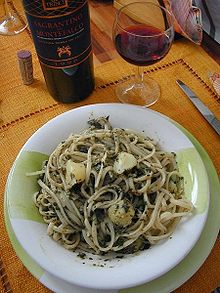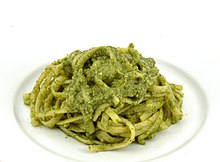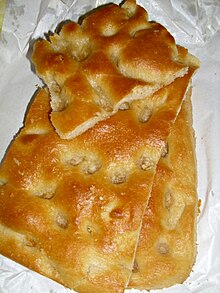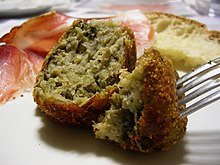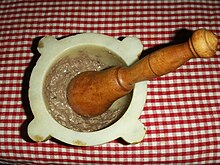Characteristics
Ligurian cuisine is affected by the geomorphological characteristics of its territory. It makes use of ingredients coming from the sea as well as game and meat. Ligurian cuisine has transformed over the centuries in relation to the socio-economic situation of the region. The scarcity of cattle pastures forced the Ligurians to develop dishes based on alternative ingredients such as fish and herbs, to which game was subsequently added.[1] Ligurians pair their meat condiments based on wild or cultivated herbs, among which pesto stands out, which is used both as a sauce for pasta as well as being added to autumnal soups with a variety of fresh vegetables.[2] Also important are the many savoury pies with vegetables, the most famous of which are the pasqualina cake, the ripieni and focaccia traditionally filled with stracchino cheese known as focaccia col formaggio. There are dishes based on ingredients such as herbs or chestnuts traditionally eaten by farmers.[3]
The preservation of food and therefore the use of Mason jars is fundamental in Ligurian cuisine, traditionally filled with mushrooms in oil, jams, honey, salted anchovies, brined foods, and dips.[4]
Fruits
Fruits and fruit salad is usually paired with sweet, white or red wines.
